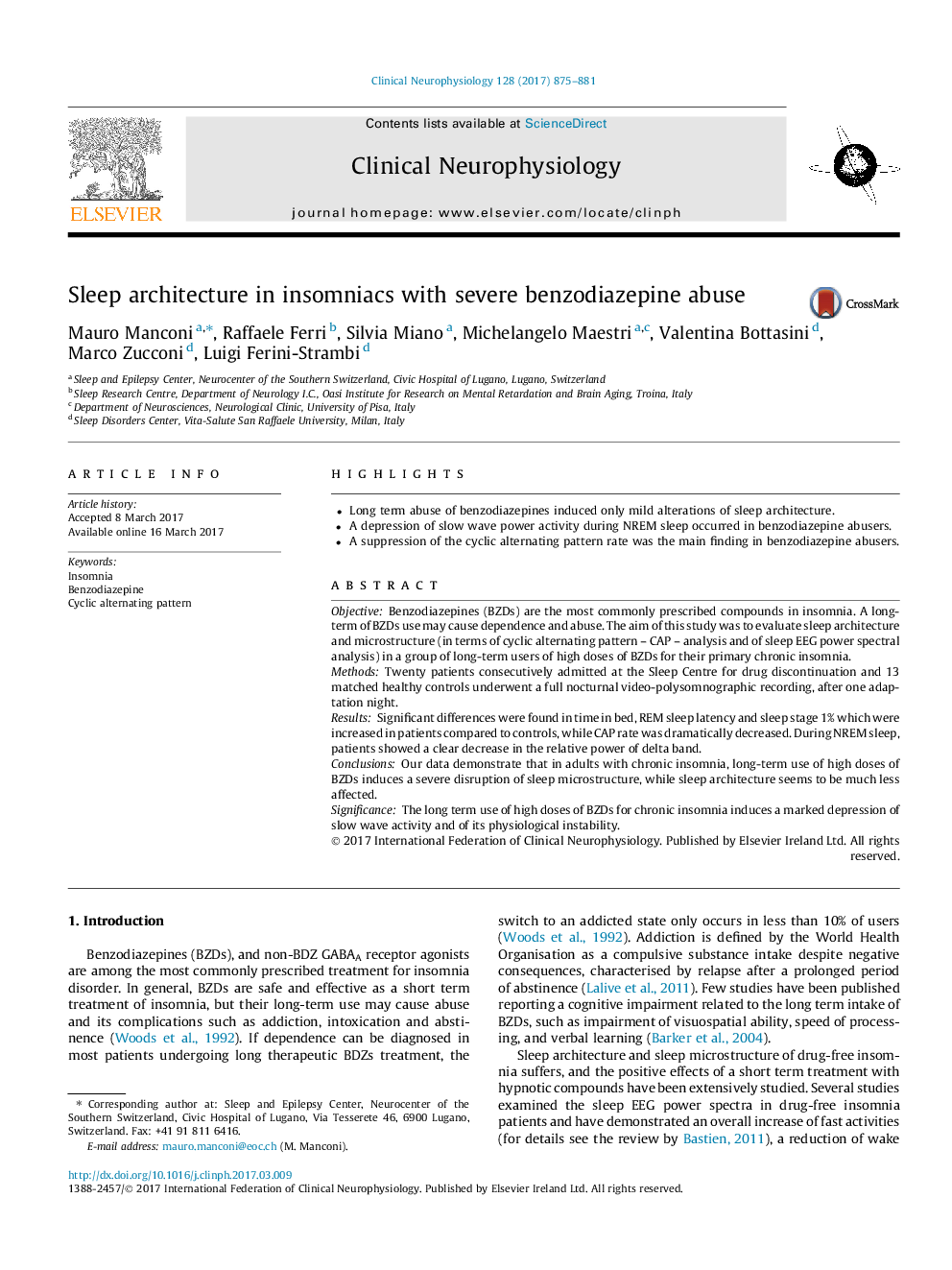| کد مقاله | کد نشریه | سال انتشار | مقاله انگلیسی | نسخه تمام متن |
|---|---|---|---|---|
| 5627911 | 1406358 | 2017 | 7 صفحه PDF | دانلود رایگان |
- Long term abuse of benzodiazepines induced only mild alterations of sleep architecture.
- A depression of slow wave power activity during NREM sleep occurred in benzodiazepine abusers.
- A suppression of the cyclic alternating pattern rate was the main finding in benzodiazepine abusers.
ObjectiveBenzodiazepines (BZDs) are the most commonly prescribed compounds in insomnia. A long-term of BZDs use may cause dependence and abuse. The aim of this study was to evaluate sleep architecture and microstructure (in terms of cyclic alternating pattern - CAP - analysis and of sleep EEG power spectral analysis) in a group of long-term users of high doses of BZDs for their primary chronic insomnia.MethodsTwenty patients consecutively admitted at the Sleep Centre for drug discontinuation and 13 matched healthy controls underwent a full nocturnal video-polysomnographic recording, after one adaptation night.ResultsSignificant differences were found in time in bed, REM sleep latency and sleep stage 1% which were increased in patients compared to controls, while CAP rate was dramatically decreased. During NREM sleep, patients showed a clear decrease in the relative power of delta band.ConclusionsOur data demonstrate that in adults with chronic insomnia, long-term use of high doses of BZDs induces a severe disruption of sleep microstructure, while sleep architecture seems to be much less affected.SignificanceThe long term use of high doses of BZDs for chronic insomnia induces a marked depression of slow wave activity and of its physiological instability.
Journal: Clinical Neurophysiology - Volume 128, Issue 6, June 2017, Pages 875-881
